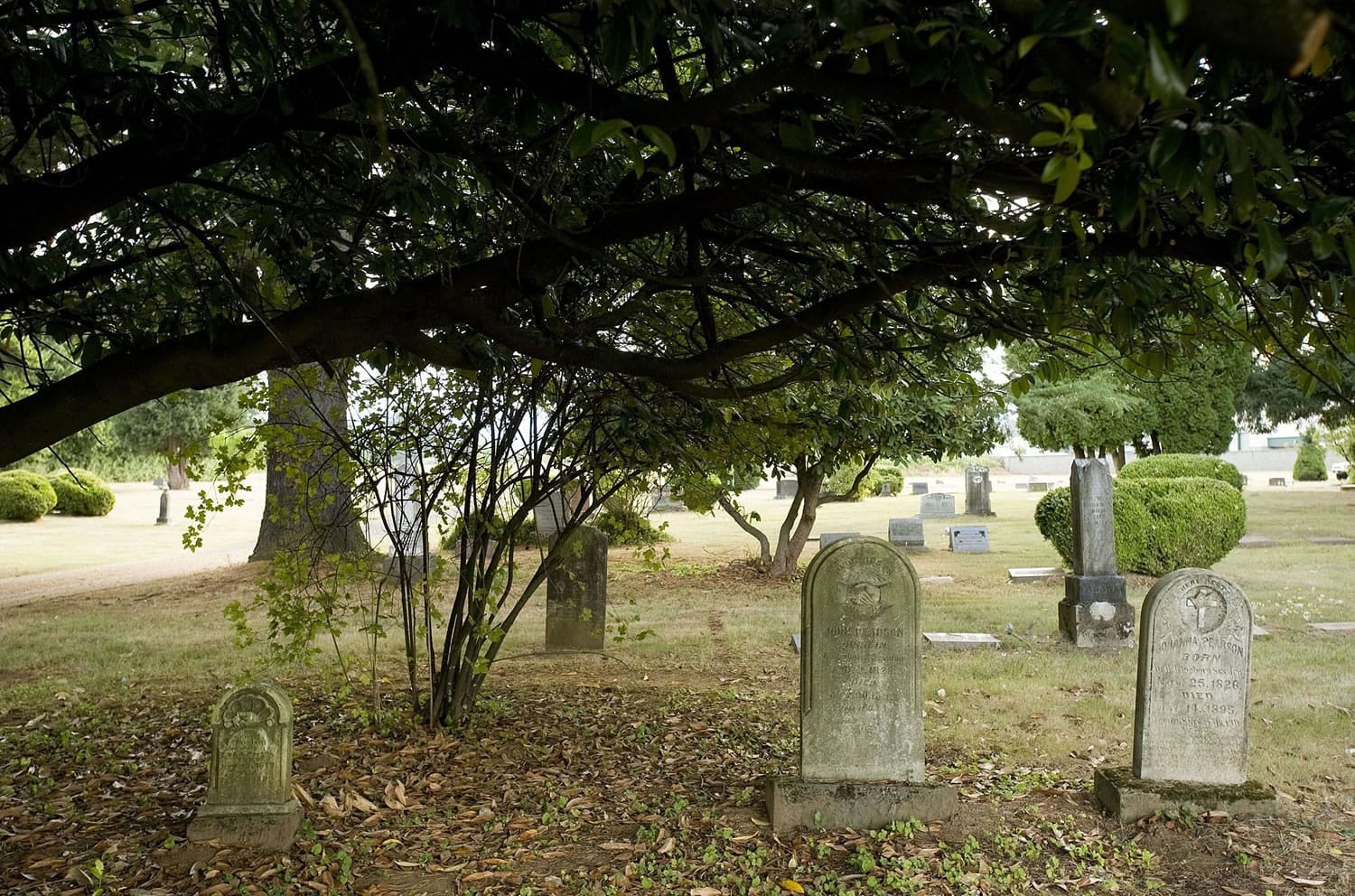There’s not a lot of brush left near the final resting spot of the man who apparently named the community of Brush Prairie.
But his grave has remained constant as the streets, homes and shopping centers sprouted around the area through time.
James Rambo, who died at the age of 70 on March 11, 1897, was an early pioneer when settlers first arrived in the region in the 1850s.
According to notes by Richard Engstrom, a caretaker of the Brush Prairie Cemetery, Rambo and his group became disoriented on their horses when they first rode through, and he supposedly told them, “Let me take the lead and get you out of the brush prairie.”
Back in the days of wagon trains and early farmers, the simple name apparently caught hold.
But it’s a much different world today.
If you take a weekday morning walk through the cemetery where Rambo rests, you might notice an odd juxtaposition between silent, mossy grave markers and the blaring announcements from the public address system at Prairie High School, between woody tall pine trees and the roar of cars down 117th Avenue.
The area is still somewhat rural, but not nearly as rural as it began.
“It was a county cemetery in the middle of farmland when it was first built,” said Vicki Fuerstenberg, co-owner of Vancouver Granite Works. “It’s been around for a long time. Longer than the 90 years that we’ve been in business.”
Land for the cemetery was donated by Gearshum Van Atta, a pioneer born in 1813 who lived in Brush Prairie for many years before his death in 1896. Van Atta founded the cemetery in 1865, and his grave and those of several family members are also there.
Fuerstenberg, a memorialist at Vancouver Granite Works whose family manages the cemetery, said it’s interesting to look at the areas around trees throughout the cemetery — where you’ll find many other older graves.
Some of those graves ride up along tree roots, some seem to be facing toward a bush or tree in a direction where no one could possibly read them, some seem almost purposefully hidden.
But there’s actually a simple explanation for that, she said.
“Back then, you had a family burial and then you’d plant a tree to remember them,” Fuerstenberg said. “But after you do that, the trees grow. In the newer part of the cemetery at the back, we don’t allow trees or plants anymore because of that.”
Still more pioneers lay quietly throughout the grounds — mostly in the woodier front area — near the corner of Northeast 117th Avenue and 113th Street.
Isaac Dietderich, a Civil War veteran and lumber businessman who owned Dietderich’s Mill in Salmon Creek, rests there. He was one of many who filed land claims in the area in the late 1860s.
So do John Jay Clark, who died at age 87 in 1902 and rests near many of his descendants.
Frederick Messenger and Lillie Messenger, who both died in 1865, are the oldest residents at the site. Not many details about their lives or deaths remain, other than that they were both young children who died within a month of each other.
The graves of several other young children, many who died in the 1940s, line another area near the front of the cemetery by the road.
A particularly sad one has a small decaying marker that simply says “No Name” and includes no birth or death date.
The back of the site is still open, and Fuerstenberg said her family often works on markers for newer interments.
Many of the new stones remember Russian or other Eastern European immigrants, marking another population influx to Clark County. Several of the markers are written in age-old Cyrillic.
“The cemetery is actually getting filled up,” Fuerstenberg said. “We only have one section left.”
The newer stones have a much more high-tech feel than the decaying mossy ones from the 1800s. Many of the ones in the back include pictures of the deceased made of special polymers so they won’t fade or decay over time.
Like the world around Brush Prairie Cemetery, the markers within it have also evolved.
“In the 1940s, there was a trend of people painting pictures of their loved ones on the stones, but they didn’t usually last through the elements,” Fuerstenberg said. “Now it’s all technology. We have computerization, automatic equipment. Things last a lot longer.”



